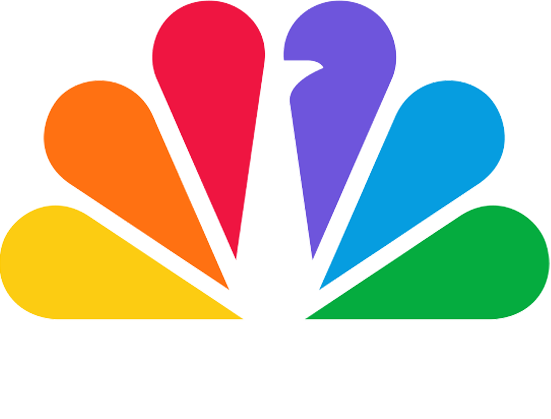WHEN: Today, Tuesday, July 16, 2024
WHERE: CNBC’s “Money Movers”
Following is the unofficial transcript of a CNBC interview with Bank of America Chairman & CEO Brian Moynihan on CNBC’s “Squawk on the Street” (M-F, 9AM-11AM ET) today, Tuesday, July 16. Following is a link to video on CNBC.com: https://www.cnbc.com/video/2024/07/16/bank-of-america-ceo-brian-moynihan-on-q2-earnings-beat.html.
All references must be sourced to CNBC.
JIM CRAMER: Joining me now is Bank of America CEO Brian Moynihan. Brian, I’m going to start with something that’s way traditional from our point of view, but I’m going anyway. Congratulations on a great quarter.
BRIAN MOYNIHAN: Thank you, Jim. It’s good to see you again.
CRAMER: OK, so Brian, one of the things that’s happened is that their net interest income, which I know is one of these lines that maybe the investors, the home gamers may not know, but it’s so important for banking earnings. We’re really extraordinary for you. And you actually called the bottom. Can you please explain to people how important this was to your earnings and the forecast has got to be good just because of what you talk about with NII?
MOYNIHAN: Yeah, so if you think about our $25 billion of revenues, nearly 14 billion of it is NII or Net Interest Income. That’s the difference between the deposits, our customers and trust to us and the loans we make and the investments we make. And, you know, that number we feel bottom this quarter. We’ve had a massive change in interest rates that are now settled in and we can talk about the economy a little bit more later. But that massive rate, that massive increase, it’s now settled in. Deposit pricing is stabilized. Deposit balance has been growing the last several quarters. And that gives us confidence when you do some simple adjustments from now, the second quarter to the fourth quarter. We told our investors today and put in our documentation that our estimate for the fourth quarter is $14.5 billion, which is an increase of $600 billion per quarter over a couple of quarters, which shows the balance sheet kind of starting to generate earnings again. And that has been a period of where we’ve been coming down a slope and now we’re starting to go up the slope. And that provides great earnings momentum for the company.
CRAMER: At the same time, Brian, one of the things that should have happened at this point with a vicious rate hike cycle is I would have expected a lot of defaults. It’s kind of the opposite. In particular, your commercial real estate makes me feel much more confident about our country because you are the biggest in our country.
MOYNIHAN: Yeah, I mean, in a commercial office space, our commercial real estate exposure, $60, $70 billion, six percent of our loans. But our office space, $16 billion is down a couple billion of the last couple, you know, four or five quarters. Charge offs, non-performers, criticized assets all fell during the quarter. So we aggressively worked on it. We aggressively pushed as they usually say, the pig through the snake rating, getting new appraisals. And now we’re seeing it come down. We expect second half to be lower charge offs and commercial real estate office than the first half. So we feel good about our position. It was always well secured. LTVs were strong. And there’s a lot of work to do in the commercial real estate sectors around the country. But we’re seeing the activity in our portfolio because of the high-quality nature of it basically work itself through.
CRAMER: Now, I think people should recognize that you are out front in terms of digital and digital platform. What I think that a lot of banks do is they say that they’re using artificial intelligence to make it so that they’re more productive. But there are a lot of them are big hat, no cattle is what I like to say, Brian. But you are putting your money where your mouth is. And I think your AI business, the way you’re using AI is right now already additive. If you can tell us what you’re doing with digital and what you’re doing with AI, if you could explain to people why you have such good expense control.
MOYNIHAN: Yeah. So I think just to put the broad context in, year over year our expenses went from 16 billion to 16.3 billion, of which 300 million was really incentive compensation, largely driven by the outperformance on the fee-based side of the company. But going to a broader context, you know, this is not something you can do overnight. You know, 25 years ago, we started deploying, you know, online banking and then mobile banking and the ad of the iPhone. And we took off of that and we’re up to 40 odd million checking customers. We have 47 million digital enabled customers, even our wealth management business, 75, 80% of the activity is digital are half our sales, more than half our sales. Our consumer business are digital each quarter now. The interactions are three and a half billion times last quarter, people interacted with us digitally. And so you’re driving that business, which allows you to maintain that expense base. So we’re operating expenses on a quarterly basis, about where we did in 2015 or ’16. If you think about that, there’s been — you know, that’s almost eight, nine years of inflation and higher cost and more people and growth and a bigger company. And that’s all through the implementation of digital capabilities. What artificial intelligence does is takes that to another level. And we’ve seen that with the Erica capability we have. It’s up to 19 million odd users. They’re doing 150, 160, 170 million interactions a quarter. Each one of those would have been a text or a phone call or an email and a direct response. And now it can answer the straightforward questions. And it is a straightforward, natural language processing engine, which we developed 10 years ago and put into service five or six years ago. And it’s been growing and growing. And now we’ve taken that technology and applied to other places. We think there’s great hope for AI on taking models that are built for specific purposes, applying them to our data. Then you make sure they’re fed right, applying them on our premises so we make sure they’re secure with our customers. And then we can use them to help us do tasks and take work away that teammates would rather not do and replace it with more work they’d rather do. And that’s what we’re up to.
SARA EISEN: I.e. better margins, which everyone’s excited about. So, Brian, what’s happening with the consumer? It’s been confusing to read different earnings reports from consumer and retail companies. We got a solid retail sales report, jobs pictures still OK, even though it’s cooling a bit. What’s your sense of things?
MOYNIHAN: Well, so if you go back a couple of years ago, people thought when you looked at consumers that what was going to happen, they’re going to take their stimulus related funds from the pandemic. They’re going to spend them all down. Their accounts were going to go down. Their delinquencies start to rise, et cetera. None of that’s really happened. But about six or nine months ago, you started to see the consumer fundamentally slow down. The higher interest rate impact, you know, the job turnover slowed down. Our attrition rate dropped. They’re getting employed, getting paid more money. Inflation was heating up. They’re getting more careful. So if you think about the last two or three quarters, we’ve gone from a six percent year over year growth rate to about a three and a half percent year over year growth rate and what we call consumer spending. For us, that means all the money goes into the economy out of our consumer accounts all added together, whether it’s credit card, debit card spending, checks written, Zelle payments, wires, ACH, et cetera, and cash taken out and made an economy. That three and a half percent level, which is running out even in the first part of July here, is very consistent with a low inflation, two percent type growth economy that we saw in the ’17, ’18, ’19 arena. So what I’ve said is, in my mind, the way to simplify this is to say that the Fed has gotten a consumer in the right place. Now they got to be careful they don’t go too far and dispirit the consumer where they really slow down the spending. It really goes negative. And so that’s the customer money moving into the economy in the broadest context. That is four trillion dollars plus at Bank of America a year. So it’s a big sample and you’ve seen it slow down. And now we’ve got to be careful that we keep the balance right.
EISEN: Sounds like you want to see a cut.
CRAMER: I was going to say, Brian —
MOYNIHAN: But it’s not what I want to see.
CRAMER: We need a cut. I would listen to your quarter. I look at the loan, rate of decline of growth of loans. And if I’m listening right now and I’m Jay Powell, I would say, you know what? We don’t have to do July, but we have to do September.
MOYNIHAN: Well, the market’s now at 100% in September. The NII statistics I gave you early, Jim, assume three cuts, September, November, December. Our team — our research team, that’s what the market has. Our research team has one cut, but my guess is they’re going to move that around as they do. They have four cuts for next year. So the real question that people have to straighten out is there could be interest rate cuts. But our expectation as a company and Candace Browning Platt and the research team, which do a great job for us, is for a three and a half percent end point on the Fed funds rate. In other words, it comes out of that level and sits there because in a higher growth, a little bit higher inflation economy, the front-end rate will be higher. So whether it’s three or three and a half, that’s much different than the last 15 or so years, where it’s basically been next to nothing except for a very short window where it was raised and in fact cut before the pandemic, if you remember. So getting to more normalized by the United States for the three, three and a half percent long Fed funds rate, which is more consistent for four and a half percent 10 year or something like that. That rate curve would be much more healthy, I think, overall, because it would evidence good growth, a controlled inflation and a flexibility to move the rate structure up and down a response. And that’s what our team thinks happens between now and ’26. And so we’ll see it. But, you know, I think all of us believe that consumers slow down enough borrowing demand by businesses. OK, as Sara said, it’s OK. I mean, there’s nothing wrong. Consumer defaults are still well within our expectations, normalized to where they were in ’19. Commercial defaults are still very low. But all that activity says it’s OK. And now it’s time the Fed to get the balance back because the high — the restrictive rate structure is much higher than they need to have to keep the economy gliding towards the inflation towards two percent. I think that Chair Powell said that the other day. We see the same statistics to support that.
CARL QUINTANILLA, CNBC ANCHOR: Brian, when you think about things that might impact the consumer mindset negatively, is it about employment growth or the availability of jobs? And how does this wave of homeowner equity that’s in place right now, I think the other day, AP put it at 17 trillion help support the consumer mindset?
MOYNIHAN: Well, it’s good for the consumers, are employed. They’re earning more money. Frankly, the amount of inheritance going to consumers is from people my age and older giving to their kids and stuff is very high. The money transfers start to take place. Those are all good benefits against that. You know, housing prices are high. Rate structure is high and getting into homes is high. Inflation slows them down. And so we’ve got to be careful because the whole consumer is a bunch of different, you know, people, a wonderful group of people, a wonderful group of customers for us. And they’re affected differently by the market out there. But by and large, you know, the savings have gone up. The wealth has gone up with the stock market and housing appreciation. But on the other hand, getting into housing is more expensive. And that equilibrium, all you guys are free market economists that believe in the capital system, that equilibrium would come in sync at some point. But it just takes time to adjust. Meanwhile, we’ve had this massive stimulus that we’ve got to be careful that the federal government deficits, state deficits, all this stuff has to come back in sync. And so there’s work to do in the economy. But it’s better to be with four percent unemployment plus or minus than doing this at six percent unemployment. You know, turnover rates in companies are fine. So everybody’s OK. But we just got to make sure that we manage it well. Now, it is the hard part. Now, again, it was hard earlier on. It’s now hard again because now there’s really judgments have to be made to fine tune. And that’s what we see.
EISEN: Brian, I wanted to ask about, you know, back to your bank that the return on tangible common equity. And we’ve talked about this before, but at 13.6%, so far below J.P. Morgan’s around 20% for a bank that you have so much lower capital levels. And we’ve talked about it before, but I think it’s worth mentioning because it comes up in conversations with investors and it is a big gap for two businesses that do essentially the same thing.
MOYNIHAN: Yeah, there’s a mix of business question and, you know, the markets business are doing well, if you look at those businesses, they’re growing and doing well and they produce a lot of incremental profit. We’re more of a, you know, our earnings are half consumer and wealth management and that drives things. But the 14% round numbers we’re getting now is way above our cost of capital. And we expect that to go up because at the end of day, our NII as it starts to grow, that’ll happen. The second thing is we’re carrying a lot of excess capital because with all the rule changes we’ve been sitting, our capital ratio is 11.9%. The requirement is even under the new CCAR that just came out is only 10.7%. So, you know, we’ve had excess capital. It’s been stored up. We are starting to buy, you know, return that capital more aggressively to shareholders prior to the pandemic. The pandemic came. We had to slow down and we went a couple of years and started returning it again. And guess what? The CCAR results banged around the new capital debate. So everybody held back. We still bought back three and a half billion shares. So it’ll keep toning up as we bring down the equity and the NII comes back up. It’ll keep moving up and moving north. And our job is to return, drive good returns for our shareholders. And those returns are very strong relative to our cost, you know, our stable earnings stream and the capabilities we have and our risk premium and all the wonderful stuff the markets talk about. But we feel good where it is now. We know we’ll keep going north.
CRAMER: Brian I want to talk about regulation for a second. There have been a belief after what we had, the mini bank crisis, that perhaps your bond portfolio could create a real problem. This was just a complete canard, utterly wrong. And a lot of it, I think, was from a Federal Reserve that likes to fight the last war. Do you think under, say, a different regime in the White House, maybe you won’t have to shadowbox the short, so to speak, who are trying to drive your stock down? And that was plain and simple what was going on.
MOYNIHAN: Well, Jim, you know, I think what allows us to have a big investment portfolio is the fact we have a trillion nine in deposits and a trillion dollars of loans. And that amount of money keeps growing, frankly. And so we have to put it to work. And the way to drive the value for the shareholder from those deposits is to invest in short-term securities and long-term securities. And half are — 52% of our securities is short. You know, on regulation and things like that, our industry is making clear standpoints on what we’d like to see, the changes we’d like to see. Because, look, the people that run these companies came out of the financial crisis as leaders that took — a lot of us took over the helm after that, have had to fix massive amounts of change, have agreed with good regulations that have been passed. And we’re saying, wait a second, let’s keep the balance. Because at the end of the day, what do banks do? They help the economy grow and prosper. They help the United States be successful. And extra capital, 100 basis points, extra capital, which doesn’t sound a lot to anybody if you’re, you know, a regular person out there, 100 basis points, one percent, you know, 100 basis points more capital. Brian, what are you talking about? Well, if you do the simple math for us, that’s $16 billion, that’s $160 billion dollars of loans we could do that we can’t do today because of it based on risk, which may or may not come true. And so we pass a CCAR test, you know, multiple, multiple times. The loss of the CCAR test under really aggressive scenarios say they have excess capital. And yet people say we need more capital. And that’s where the industry is trying to say, wait, wait, wait, we’ve gone through all this, we’ve adopted a lot of consumer reforms, a lot of operating reforms, we’ve adopted capital reforms. At the end of the day, the United States capital system is much more strenuous than anywhere else in the world, because we have the higher standardized and advanced measures. And that just puts us in a different place. So let’s keep this balance. So that’s what we’re talking about. And I, you know, I’ve never sort of seen the kind of arguments out in a broad populace about bank regulation, because we’re not that interesting. You know, the idea that somehow, the person on the streets worried about what BASEL III says is kind of interesting to me, having been around us for 40 years. We just want balance, we want good regulation, we want predictable regulation, because we want to help the economy grow. And things that get in the way of that, we’re going to raise our hand and say, wait a second, we’re not so sure that’s right.
CRAMER: Yeah, if I want excitement, I’ll go to Nvidia. I don’t want to go to Bank of America. I don’t want to go to Brian Moynihan and get excitement. But Brian, I do want to talk about zeitgeist for a second. I know it’s not going to be in the conference call or anything like that. But everything you just said, and you mentioned that we’re capitalists, it just seems like this is a great time for people, for regular people, as you mentioned. And yet, I have rarely seen other than when you and I were going around in 2008, 2009, the level of negativity, the level of anger, the level of belief that there’s no hope. How do you explain the little to no hope particularly of the younger generation with the numbers that you just put on, which shows you that the largest commercial bank in this country is having maybe a golden age, which is really good for America?
MOYNIHAN: I think at the end of the day, I look at what is happening, as opposed to what people say is happening. If I look at the consumers in our business, they’re spending money on foreign travel. They’re spending money on, you know, experiences. That is inconsistent with a group and remember, this is 47 million, you know, 40-odd million consumer checking accounts. It’s not a small sample in the United States, the primary account in the household. And if you think about that, and they’re taking trips, and they’re booking travel, and they’re doing things, that is a bit inconsistent with them saying, you know, I’m having trouble. Now, the reality is they’re worried. And that’s back to the discussion we had before. Inflation has eaten up more of the wages. The wages have grown to meet it. It’s just the timing was different. Wages went up first, inflation. People remember different prices. Three years ago, I remember I was on with one of your colleagues, and we were talking about, you know, economists’ view of inflation versus a person’s view. If the price goes from 100 to 115 in the prior three years, and then only moves to 116, economists say, well, it’s a one-point inflation on 115, less than a percent. The person says, wait I used to pay 100 for this, and now I’m paying 116. So that issue is on people’s minds, and you can see it. And that’s where we have to be a little careful that as they slow down, they’re not dispirited and slow down and really stop. Because at the end of the day, if the U.S. consumer stops spending their money into the U.S. economy, the U.S. economy is going to have a problem. And that’s where I think the challenge over the next 12 months is as hard as the challenge was to figure out when to cut down on the inflation two and a half years ago.
CRAMER: Well, either way, Bank of America remains a very inexpensive stock, even after a terrific quarter. I want to thank you, Brian Moynihan, for coming on. It’s really good to see you at this hour. Thank you for coming on our show.
MOYNIHAN: Thanks. Thanks, Jim and everyone. Good to see you again.
For more information contact:
Jennifer Dauble
CNBC
t: 201.735.4721
m: 201.615.2787
Stephanie Hirlemann
CNBC
m: 201.397.2838



















